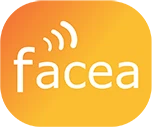How To Deal With Changes in The Security Industry
Leave a message
First of all, has the security changed?
The answer is yes. Security in the domestic development of forty years, its definition is security, security industry usually refers to the use of technical means (technical defense) to solve the problem of security and prevention, the initial form of the industry is mostly to use audio and video technology to achieve demand.
Look at the current security industry, solutions cover thousands of industries, emerging technologies are emerging in endlessly.
With industry leading hai kang to own localization probably can see that the change of the industry, from the very beginning of video monitoring solution, to the video as the core of the smart iot solutions and big data service provider, now will al perception, artificial intelligence, big data technology service in one thousand, any profession to lead a new future for smart union. We've seen a lot of changes, but I think it boils down to these three:
01Security customer needs have changed
Previous customers put forward functional requirements, such as installing a monitoring anti-theft, installing a door controller, installing a brake car.
An enterprise is defined as a product company when it provides one or more products to meet customer needs through simple combination of connections.
Now customers are proposing scenariospecific requirements, such as the intellectualization of a building, a campus or even a city.
Enterprises provide solutions to meet customer needs through the collaborative integration of multiple systems (product combinations), which is defined as solution companies or service providers.
So the change of customer requirements can be summarized as: from products to solutions, from serving functions to serving scenarios.
02 Security core technology has changed
As mentioned above, the security industry mostly uses audio and video technology to solve problems at the beginning. In my impression, the technological change cycle of the security industry is too long. Codec upgrade (MJPEG-MPEG4-H.264-H.265), transmission upgrade (analog-digital), resolution upgrade (CIF-D1-720P-1080P-5M-4K), are basically around audio and video technology.
In the past two years, the pace of technological change in the security industry has been significantly accelerated, and the changes brought to the industry are also more obvious. Many technologies such as AI, big data and cloud have been launched in the security industry.
Security engineers are no longer just discussing codec, single chip microcomputer, mode revolution, information fusion, data, digital twin... More and more new concepts need to be understood.
The core technology used to be around audio and video, now the core technology is around data value.
03 Security players have changed
In the past, security was a small branch of the IT industry, focusing on hardware. Manufacturers were responsible for R&D and manufacturing, while engineers were responsible for project implementation. With the change of customer demand, in addition to the traditional security equipment, it also needs a lot of data calculation, platform integration, integration maintenance and other work, so more and more players are involved, such as AI, Internet, ICT, communication, integration and other companies. Security is now more of a business within the AIoT industry.
Will these companies have an impact on traditional security companies, and will the landscape of the industry change? I don't think anytime soon. AIoT is a story of a sea of stars, a track with long slopes and thick snow. Traditional security companies have accumulated industry barriers (industry understanding, channels, relationships, etc.) for a long time, it takes time for new players to break through.
And most of the new players into the security industry look at the security generated by a large number of data how to explore the value of traditional business is not their dish.
How do we do?
In the past two years, the pandemic has brought us enormous challenges and changed the world so much. But one thing is certain: the digital trend has not changed. The competitiveness of future solutions will depend on who has richer data, who can compute faster, who can truly understand the data, protect the security and privacy of the data, and use the good data to help customers reduce costs and increase efficiency.







